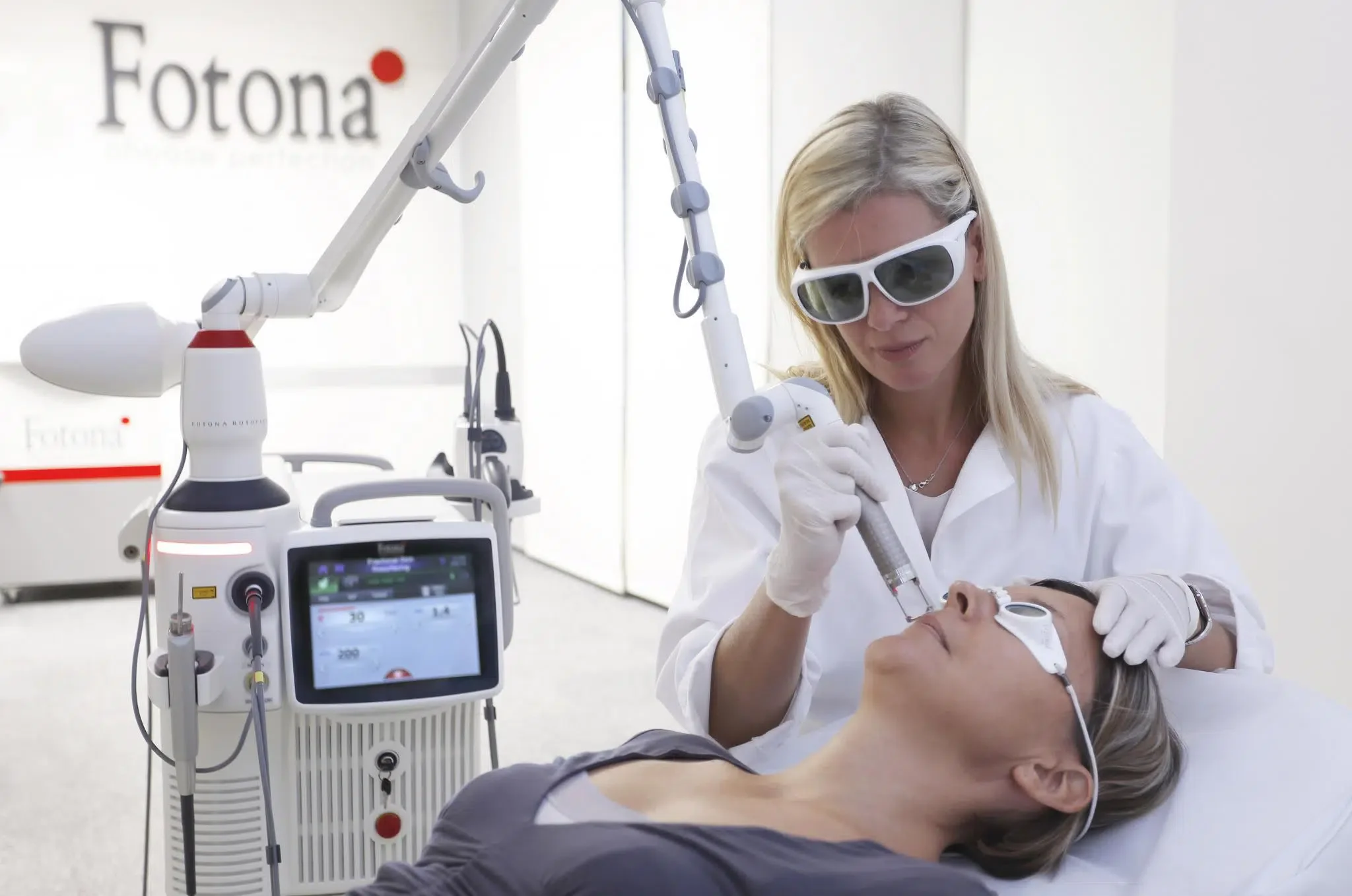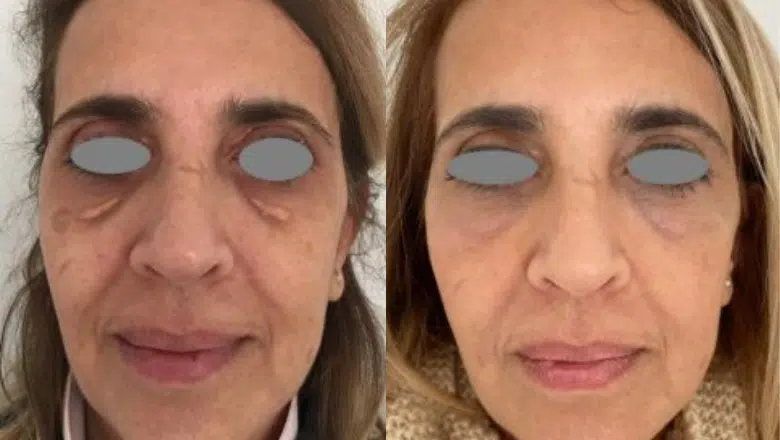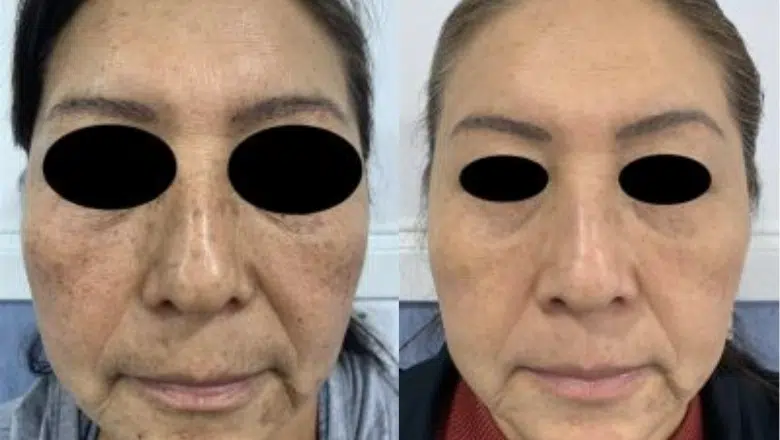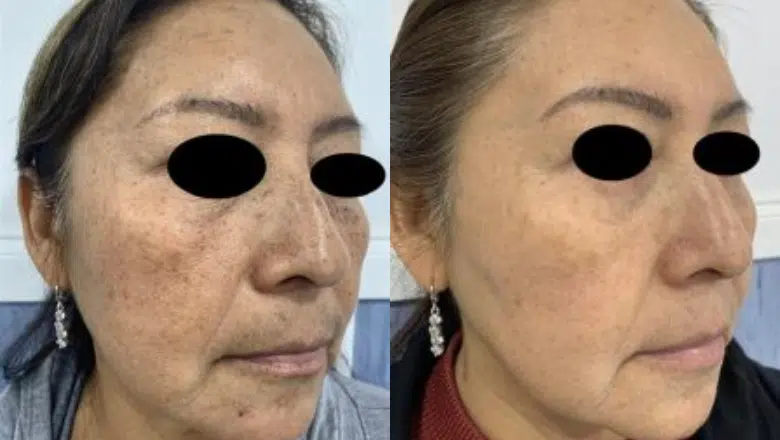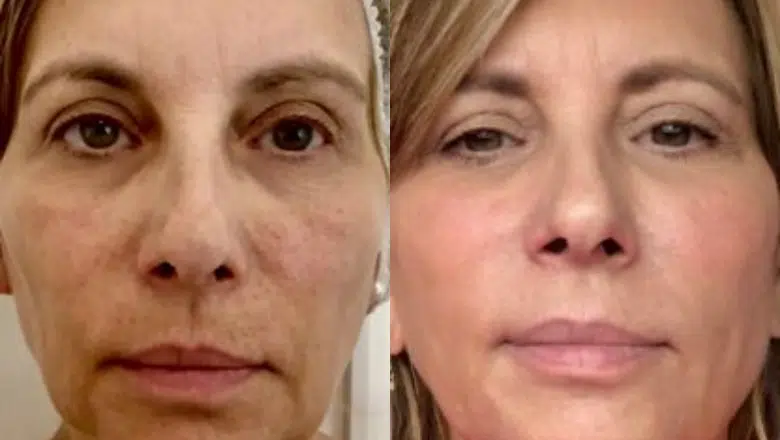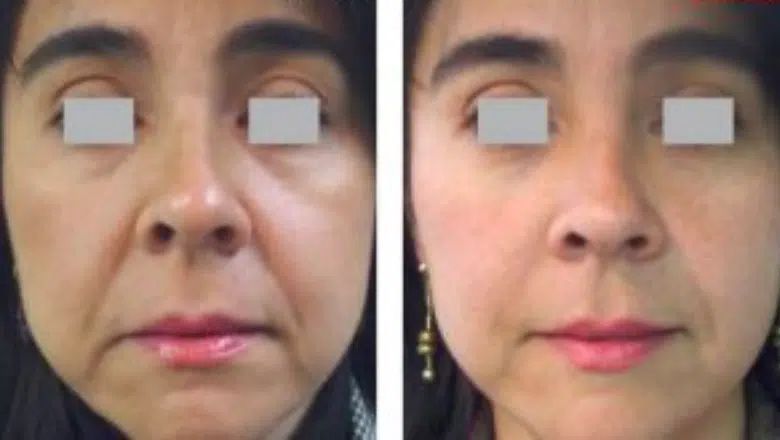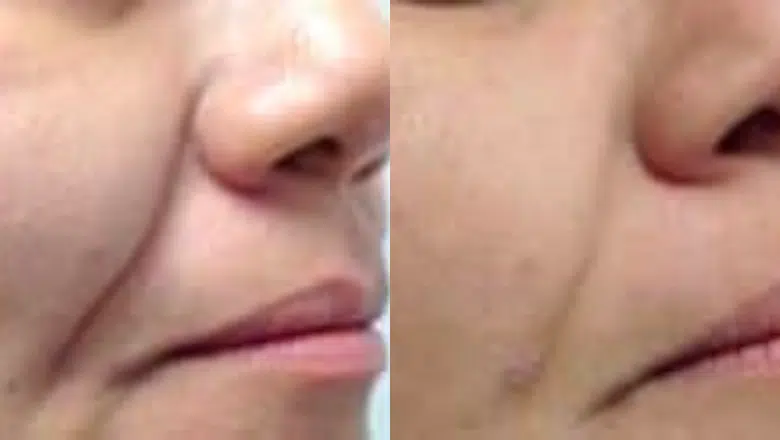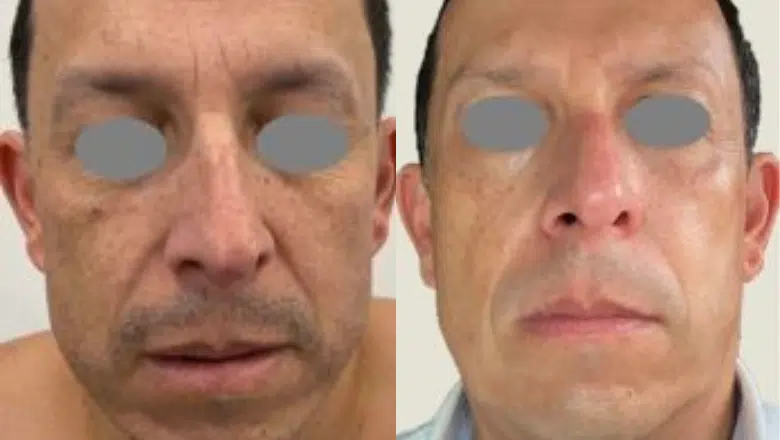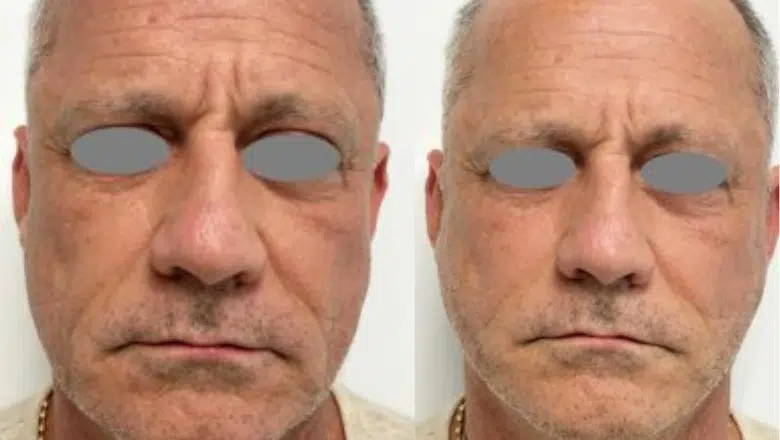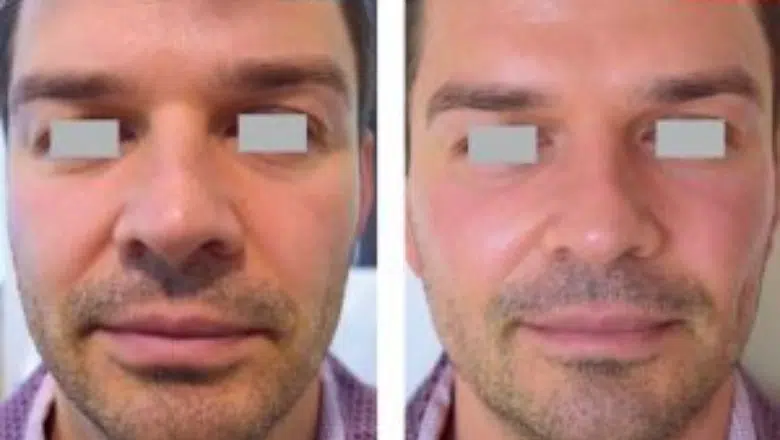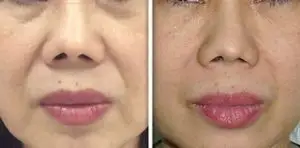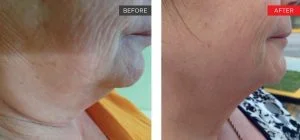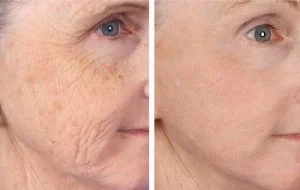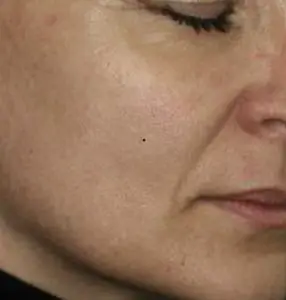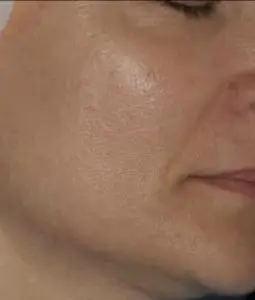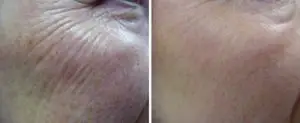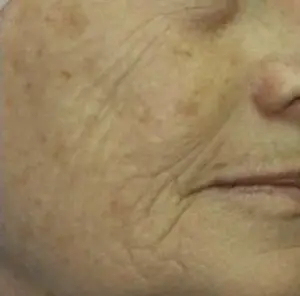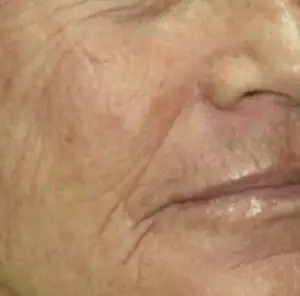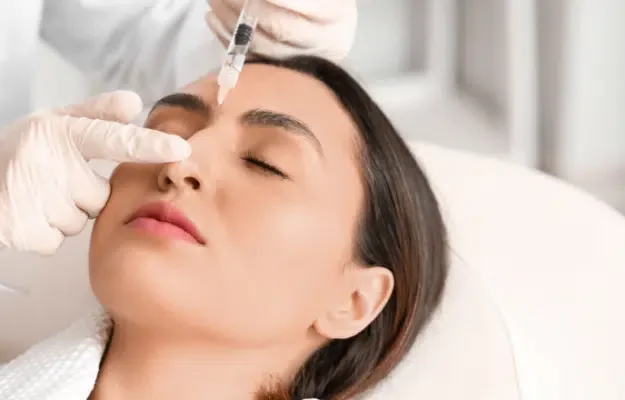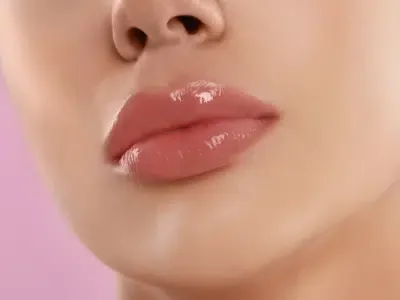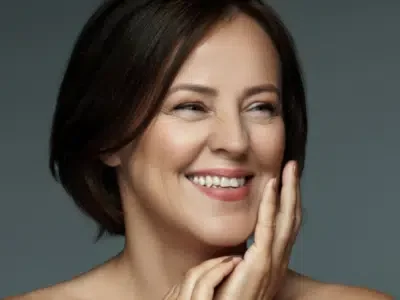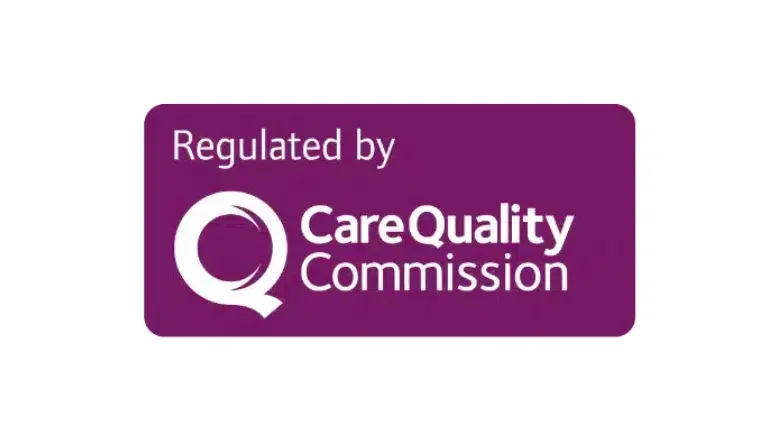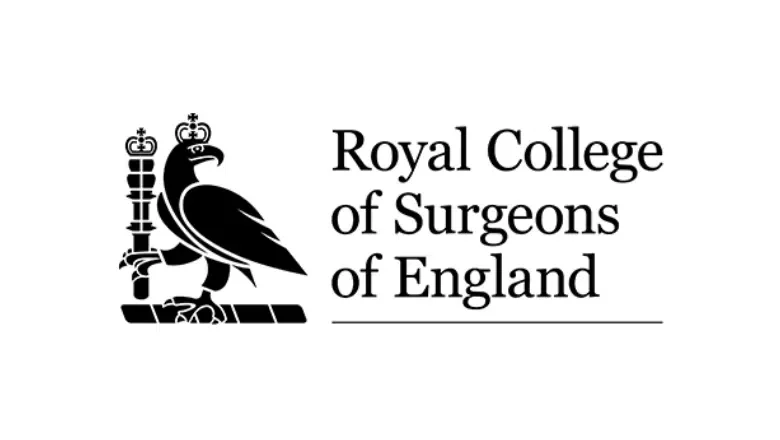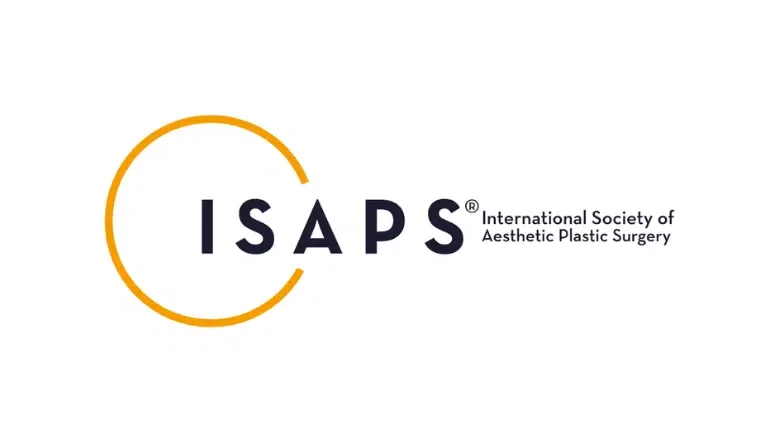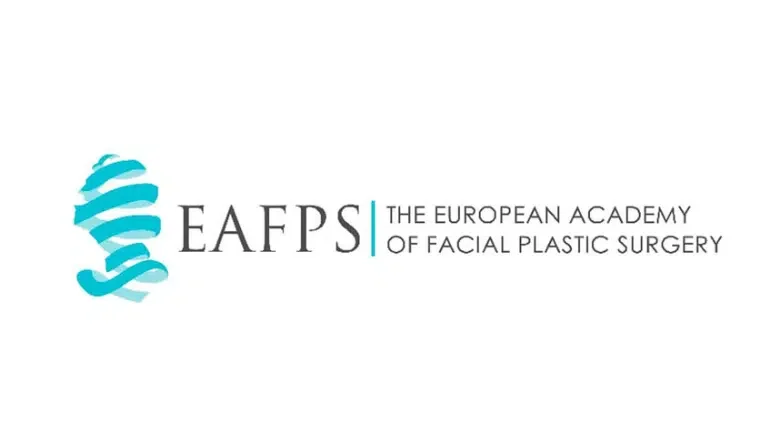Fotona 4D in London
Experience the future of non-invasive rejuvenation with Fotona 4D – the revolutionary laser technology that lifts, tightens, and revitalises your skin for a youthful, radiant glow
Fotona 4D non-invasive facial rejuvenation at Centre for Surgery in London has long been the most highly desired aesthetic improvement, and the increased interest in skin rejuvenation has promoted the rapid evolution of different methods to treat aged skin. The Fotona 4D laser facelift is a completely non-invasive method of improving the appearance of fine lines, wrinkles, uneven tone and texture and loss of volume. Using the incredible Fotona SP Dynamis Erbium laser, new collagen and elastin production is also stimulated, resulting in skin tightening and giving the skin a youthful, healthier appearance. Fotona 4D perfectly complements injectable treatments such as wrinkle-relaxing injections and dermal fillers.
RELATED: Fotona4D Before & After Photos
This will help to combat facial ageing as well as target superficial imperfections. For younger patients, Fotona 4D is a genuine alternative to a facelift. Fotona 4D can tighten your skin and increase volume without using anti-wrinkle injections, dermal fillers, or invasive surgical procedures.
This procedure is one of our most popular procedures at Centre for Surgery. It is popular amongst celebrities. Kim Kardashian is the most recent high-profile celebrity to have recently had a Fotona 4D laser lift procedure. Fotona 4D can be combined with SmoothEye for comprehensive facial rejuvenation.
What is Fotona 4D laser ?
Traditional ablative laser skin resurfacing treatments using lasers such as fractional CO2 have long been considered the gold standard for skin rejuvenation. Fotona Er:YAG lasers produce less residual thermal injury, and hence a much-reduced depth of tissue injury compared with quicker healing and much-reduced downtime compared with traditional CO2 lasers. However, ablative laser treatments have become less popular recently due to prolonged downtime and an increased risk of complications with long-lasting side effects.
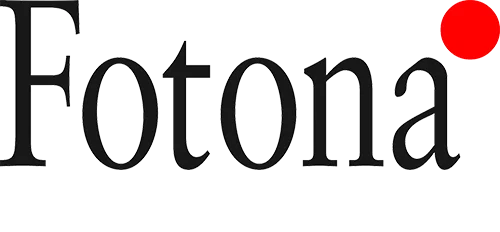
Fotona 4D improves upon existing laser resurfacing with a protocol that combines high efficacy, minimal downtime, and minimal chance of side effects. Several non-ablative treatments using different wavelengths have been developed, but few have the safety and efficacy of Fotona 4D. With traditional ablative techniques, a reduction of superficial imperfections such as photodamaged skin can be achieved, but with nonablative methods, a thermal effect produces a wound healing response and the stimulation of collagen remodeling, leading to tissue tightening. Fotona 4D combines non-ablative tissue tightening with a gentler erbium laser micro peel with minimal downtime, and your practitioner may advise combining Fotona4D with Morpheus8 for an even more powerful anti-ageing effect.

Unlike other facial rejuvenation techniques, Fotona 4D does not involve any injections, chemicals or surgery. It is ideal for those who want to appear rejuvenated and also wish to have minimal downtime following the 4D procedure. Fotona 4D uses two laser wavelengths (NdYAG 1064nm and ErYAG 2940nm) in four different modalities (SmoothLiftin, Frac3, Piano and SupErficial) during the same treatment session with a goal to thermally stimulate various depths and structures of the facial skin. There is lower melanin absorption with Nd:YAG lasers and, therefore, less concern for epidermal damage, and they may be more safely used to treat patients with darker skin. Compared to other lasers, the risk for post-inflammatory hyper-pigmentation is very low.
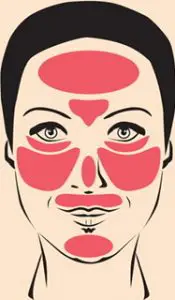
The four dimensions of the laser facelift refer to four treatments within Fotona’s SP Dynamis system: SmoothLiftin, FRAC3, PIANO and SupErficial. These treatments work together to combat the signs of ageing.
Fotona4D Before & After Photos
Case 1:
A 55-year-old female had Fotona 4D with the removal of bilateral xanthelasma below the eyes with an Erbium laser.
Case 2:
A 61-year-old female with extensive hyperpigmentation and facial rhytids who completed a course of Fotona 4D combined with the Obagi Nu-Derm system.
Case 3:
Case 4:
Case 5:
In those with more extensive degrees of sun damage, hyperpigmentation or wrinkle formation, your practitioner may use higher laser settings, resulting in a more extended downtime. Your practitioner may, therefore, recommend a skin preconditioning regime consisting of skin bleaching cream (2%-4%), topical retinoids (0.05%-0.1%), alpha hydroxy acid (4%-10%) and sunscreen. The preconditioning regime improves skin tolerance, bleaches the skin and increases blood flow in the skin. It also allows the skin to heal 3-4 days faster due to more rapidly renewing skin and increased collagen production.
Benefits of Fotona4D Laser Treatment
Fotona4D is an advanced laser treatment that combines four distinct modes and two complementary wavelengths to provide comprehensive non-surgical facial rejuvenation. The “4D” in Fotona4D signifies the four dimensions it targets: SmoothLiftin, FRAC3, PIANO, and SupErficial. Here are the notable benefits of this innovative treatment:
Collagen Stimulation and Production
Fotona4D employs heat to stimulate collagen production in the skin. Collagen is a fundamental protein responsible for maintaining the elasticity and firmness of the skin. As we age, collagen production naturally decreases, leading to sagging and wrinkles. Fotona4D helps counteract this by promoting new collagen production, leading to firmer and more youthful-looking skin.
Non-Surgical Facelift
One of the defining features of Fotona4D is its ability to provide a lifting effect similar to a facelift, without the need for surgery. The SmoothLiftin mode targets the interior oral cavity, which helps to tighten the skin from the inside out, creating a natural lifting effect.
Reduction of Fine Lines and Wrinkles
By using different laser wavelengths and modes, Fotona4D effectively reduces the appearance of fine lines and wrinkles. The heat generated by the laser promotes the tightening of the skin, which smoothens out wrinkles.
Improved Skin Texture and Tone
The SupErficial mode helps in resurfacing the skin, which not only improves the skin’s texture but also enhances its tone. This can be particularly beneficial for individuals with pigmentation issues or uneven skin tone.
Minimally Invasive
Unlike traditional surgical facelifts, Fotona4D is minimally invasive. There are no incisions or sutures involved, which reduces the risk of infection and significantly shortens the recovery time.
Customisable Treatment
Fotona4D can be tailored to address specific concerns and needs. By adjusting the settings and choosing the appropriate modes, practitioners can develop a customized treatment plan that aligns with the patient’s aesthetic goals.
Treatment of Multiple Concerns
Beyond just lifting and tightening, Fotona4D can address a range of skin concerns such as age spots, acne scars, and enlarged pores. This multi-dimensional approach makes it a versatile treatment option for overall facial rejuvenation.
Long-Lasting Results
While the results might not be permanent, they are long-lasting. With proper skincare and maintenance treatments, the effects of Fotona4D can be sustained for several months to years.
Increased Comfort and Safety
Compared to more invasive procedures, the treatment is relatively comfortable. Additionally, because Fotona4D utilises precise laser technology, it offers high safety, minimising damage to surrounding tissues.
No Downtime
One of the major advantages of Fotona4D is that there is virtually no downtime. Patients can typically resume their regular activities almost immediately after the treatment, which is often not the case with more invasive procedures.
Ideal Candidates for Fotona 4D Laser Skin Rejuvenation
Fotona 4D laser treatments have emerged as effective solutions for various skin issues, particularly suited for those desiring to improve the appearance of their skin. This advanced laser therapy is particularly beneficial for individuals facing challenges such as fine lines, wrinkles, or inconsistencies in skin tone and texture. The treatment works by resurfacing and rejuvenating the skin, offering a refreshed look.
Individuals taking medications that increase photosensitivity or those who are pregnant or breastfeeding are advised against undergoing this treatment due to potential risks and complications.
Fotona 4D for men
Specifically tailored for men, Fotona 4D for men adapts to the unique characteristics of male skin. Men’s skin generally differs from women’s in several aspects, such as having thicker layers, larger pores, more facial hair, and less subcutaneous fat. These differences are carefully considered in the Fotona 4D treatment protocol for men, ensuring that the procedure is customised to address these specific traits. This customisation is crucial for achieving optimal results, as it targets the skin’s unique needs effectively, leading to a more tailored and effective treatment outcome.
Fotona4D for Men – Before & After Photos
Case 1:
A 44-year-old man with facial pigmentation and concerns of facial wrinkling had a course of Fotona 4D.
Case 2:
Case 3:
How Does the Fotona 4D Laser Work?
Fotona4D laser involves the use of four treatments with Fotona’s SP Dynamis system. These are:
(1) SmoothLiftin
The first step of the Fotona 4D protocol is SmoothLiftin, which is a solution for the reduction of both nasolabial folds and perioral wrinkles. Completely unique for Erbium laser, a special non-ablative modality of Er:YAG called Smooth Mode is applied inside the mouth with the application of four to six smooth pulses aimed at the areas corresponding to the nasolabial folds and applying four pulses across the whole accessible tissue beneath both cheeks and lips. No other laser is able to work so effectively when applied within the mouth. The non-ablative Er:YAG laser for gentle heating. This stimulates collagen contraction and stimulates new collagen production. This results in an increase of tightness and elasticity in the skin. No special patient preparation is needed for this step. No anaesthesia or cooling are applied before or after the treatment.
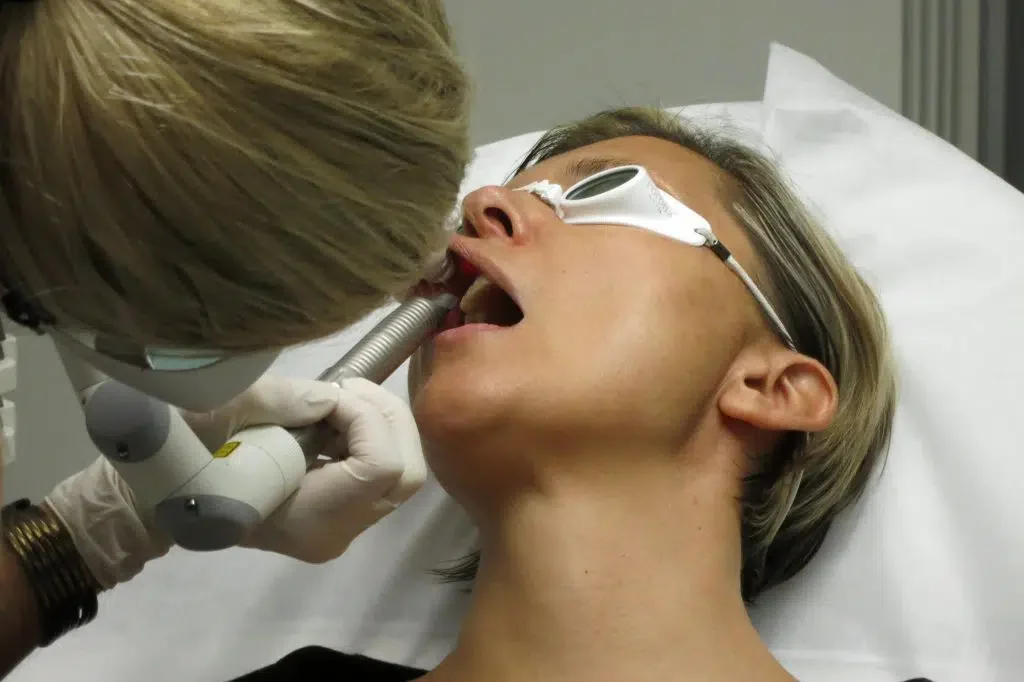
(2) FRAC3
FRAC3 mode is the second step in which short pulses are used to achieve contraction of the deeper facial tissues. With this technique, your practitioner is able to produce the vectors of tension in the skin along the SMAS layer anchoring areas, which mimics the action of PDO threads which is a more invasive procedure.
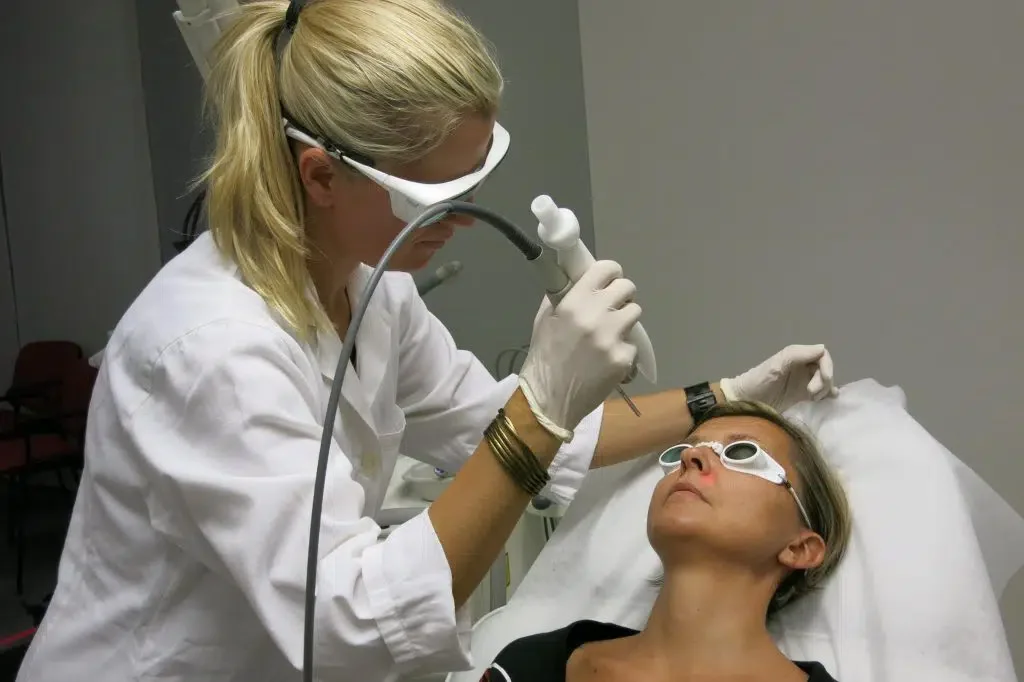
(3) PIANO
Piano Nd:YAG is the third modality in which extremely long laser pulses are used (in seconds), producing a gentle painless warming of the skin through all its layers. The bulk skin heating is applied across the whole face with a manual scanning technique until the temperature at the skin surface reaches about 42°C. Your practitioner will usually maintain this temperature for about three minutes at each of the scanned areas.
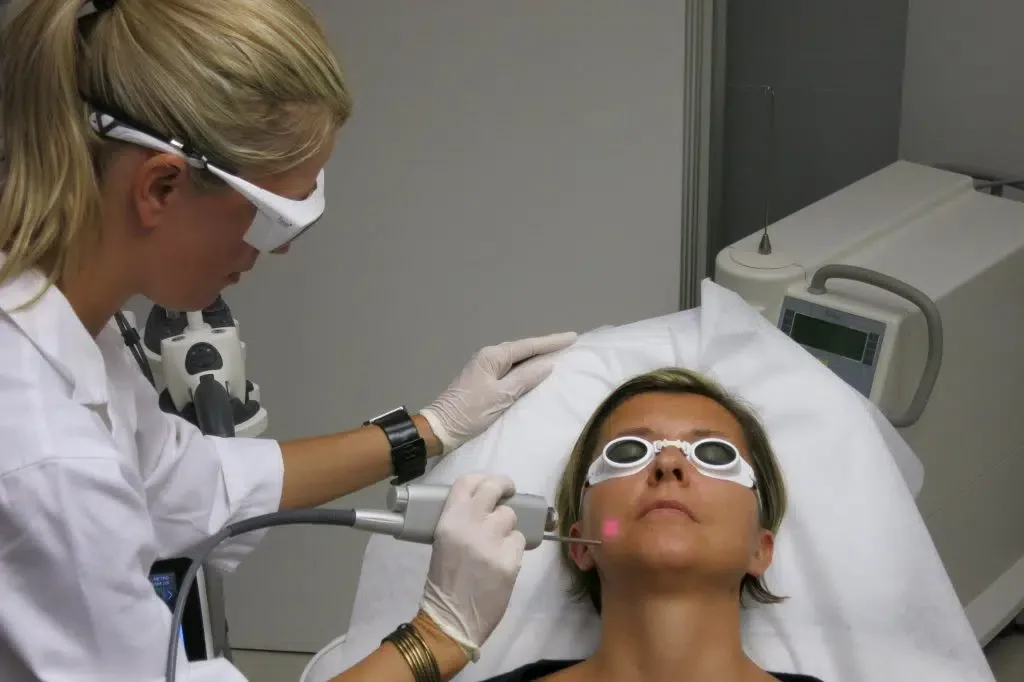
(4) SupErficial
For a pearl finish, the light cold Er:YAG ablation is used. This reduces imperfections and improves the appearance of the skin. This stage involves a controlled cold erbium micro peel without any thermal effects.
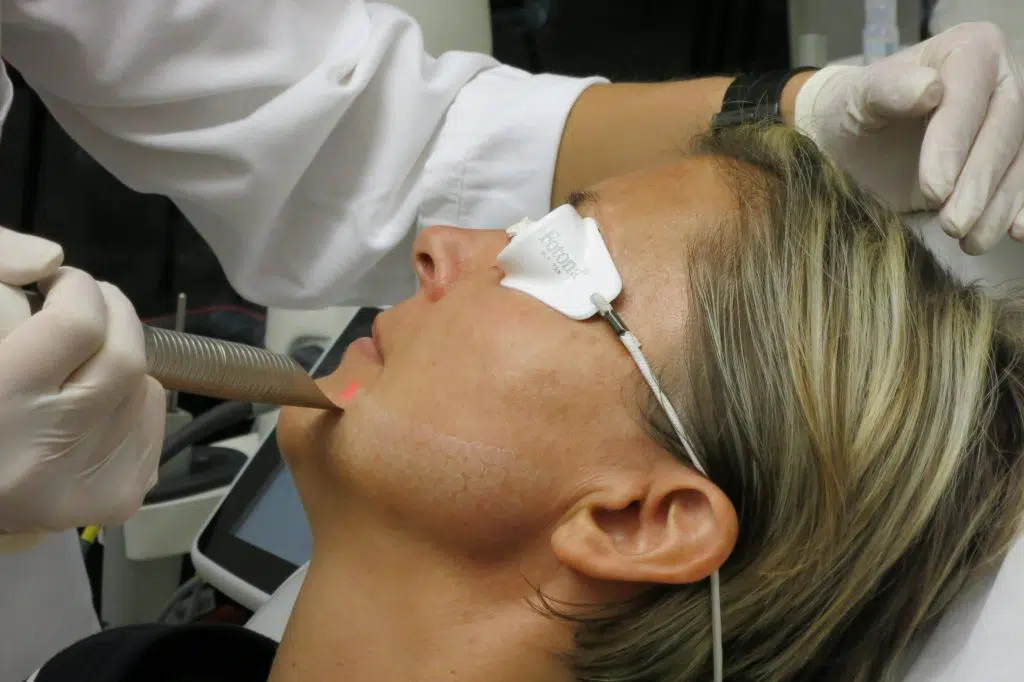
The Fotona 4D laser usually takes around one hour to complete, and you can return home once the treatment is complete.
Fotona4D Aftercare
After undergoing a Fotona4D treatment, it is essential to follow proper aftercare guidelines to maximise the results and ensure proper healing. Here are some aftercare tips to consider:
- Avoid Sun Exposure: It’s crucial to avoid direct sun exposure for a few weeks after the treatment. The skin will be more sensitive, and sun exposure can lead to pigmentation issues. If you must go outside, wear a broad-spectrum sunscreen with a high SPF and a wide-brimmed hat.
- Stay Hydrated: Drink plenty of water to keep your skin hydrated. This will help in the healing process and also facilitate the production of collagen.
- Use Gentle Skincare Products: Use gentle, fragrance-free cleansers and moisturisers for a few days following the procedure. Avoid any skincare products with harsh chemicals or exfoliants.
- Avoid Extreme Temperatures: Refrain from using hot water on your face, and avoid activities that cause excessive sweating or heat, such as vigorous exercise, saunas, and steam rooms, for about 48 hours post-treatment.
- Minimise Makeup: If possible, avoid using makeup for the first 24-48 hours after the treatment. When you do start using makeup again, opt for mineral-based products that are less likely to irritate the skin.
- Do Not Pick or Scratch: There may be some peeling or flakiness as the skin heals. It’s essential not to pick or scratch the treated area, as this can cause scarring.
- Follow Medical Advice: If your practitioner has given you specific instructions or prescribed medication, make sure to follow these directions carefully.
- Cold Compress: If you experience any swelling or discomfort, you can use a cold compress to alleviate these symptoms. However, make sure not to apply ice directly to the skin; wrap it in a cloth or use a cold pack.
- Sleep with Head Elevated: Sleeping with your head slightly elevated can help reduce swelling after the treatment.
- Schedule Follow-Up Appointments: Attend scheduled follow-up appointments with your practitioner to monitor the progress and discuss any concerns or questions you might have.
Expected Results
Fotona 4D Lift Before and After
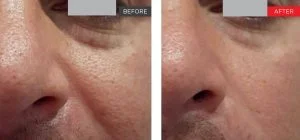
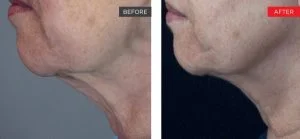
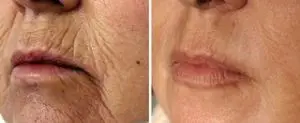
Complementary Treatments to Enhance Fotona 4D Outcomes
Fotona 4D laser treatment, renowned for its skin rejuvenation capabilities, can be effectively complemented with other aesthetic procedures to enhance overall results. Understanding the synergistic effects of combining Fotona 4D with other treatments like dermal fillers and Morpheus8 offers a broader perspective on comprehensive skin care solutions.
Fotona 4D and Dermal Fillers: A Synergistic Approach for Volume Restoration
Dermal fillers, popular for their immediate volumising effects, can be used alongside Fotona 4D to achieve a more pronounced enhancement in skin volume. While fillers provide an instant increase in volume, Fotona 4D gradually enhances the skin’s volume through the natural stimulation of elastin and collagen with repeated sessions. This combination offers a balanced approach to volume restoration, catering to different needs and preferences.
Fotona 4D is known for its ability to significantly lift and improve skin texture, a benefit that dermal fillers alone do not provide. This makes Fotona 4D an appealing alternative for individuals seeking subtle volume restoration without needles, offering a non-invasive route to skin enhancement.
The Complementary Role of Morpheus8 with Fotona 4D
Morpheus8, utilising radiofrequency (RF) energy and microneedling, is another complementary treatment to Fotona 4D. It focuses on promoting collagen and elastin production, leading to skin tightening. When combined with Fotona 4D, the two treatments can provide a more comprehensive approach to skin rejuvenation.
While both treatments exhibit skin-tightening properties, Fotona 4D offers added versatility by treating both the skin’s surface and deeper layers. This multifaceted approach can address a wider range of skin concerns, from surface texture irregularities to deeper structural changes.
Exploring Additional Fotona Laser Treatments: SmoothEye and LipLase
Fotona’s range of laser treatments extends beyond the Fotona 4D, offering specific solutions for targeted areas like the eyes and lips. Two notable treatments in this range are SmoothEye and LipLase, each designed to address specific aesthetic concerns with precision and effectiveness.
SmoothEye: Revitalising the Eye Area
SmoothEye is a specialised laser treatment developed by Fotona that focuses on the delicate eye area. This treatment aims to tighten loose skin and reduce the appearance of fine lines and wrinkles around the eyes. By directing laser energy into the deeper tissues surrounding the eyes, SmoothEye stimulates the production of collagen, a key protein responsible for skin elasticity and firmness.
When combined with the comprehensive Fotona 4D treatment, SmoothEye contributes to an overall rejuvenation of the face, while providing additional, focused care for the eye area. This synergistic approach ensures that both general facial concerns and specific issues around the eyes are addressed effectively, leading to a more youthful and refreshed appearance.
LipLase: Enhancing the Lips
LipLase, another innovative treatment from Fotona, is designed to rejuvenate, plump, and shape the lips. The treatment works by stimulating the natural process of collagen remodelling in the body, leading to enhanced lip volume and definition. Unlike injectable fillers, LipLase is a non-invasive procedure that revitalises the lips using laser energy, making it an appealing option for those seeking a more natural approach to lip enhancement.
When combined with the Fotona 4D facial treatment, LipLase adds an extra dimension to facial rejuvenation. While Fotona 4D improves the overall quality of the facial skin, LipLase focuses specifically on the lips, providing a harmonised treatment plan that enhances both the face and the lips for a comprehensive aesthetic improvement.
Fotona4D at Centre for Surgery
Making the decision to undergo a cosmetic procedure is a significant one, and choosing the right clinic is paramount. At Centre for Surgery, we understand the importance of this choice, and we’re dedicated to making your experience exceptional. Below, we’ve outlined the key reasons why Centre for Surgery is the ideal choice for your cosmetic needs.
1. Highly Skilled and Experienced Team 🩺
Our team of surgeons, nurses, and support staff are highly skilled and experienced. They are committed to ensuring that each patient receives personalized care tailored to their unique needs and goals. Our practitioners continuously stay abreast of the latest techniques and advancements in the field, to provide you with the best results.
2. Patient-Centric Approach 🤝
At Centre for Surgery, patient care and satisfaction are at the heart of what we do. We take the time to listen to your concerns, understand your goals, and develop a bespoke treatment plan that aligns with your aspirations. We’re not satisfied until you are!
3. Comprehensive Range of Services 🔄
Centre for Surgery offers a wide array of procedures and treatments, allowing you to find the perfect solution for your cosmetic needs under one roof. From non-invasive treatments like frown line injectables to surgical procedures, our comprehensive services cater to a variety of aesthetic goals.
4. Outstanding Reputation and Accreditation ✅
As a clinic that has been inspected and rated as ‘Good’ by the Care Quality Commission (CQC), our reputation speaks for itself. This rating is a testament to our unwavering commitment to safety, quality, and high standards of care.
5. State-of-the-Art Facilities and Technology 🛠️
Our Marylebone clinic is equipped with cutting-edge technology and facilities. This ensures that we can offer the latest and most effective treatments available. Our modern and comfortable environment is designed to make your experience as pleasant and rewarding as possible.
6. Transparent and Honest Communication 🗨️
We believe in transparency and honesty. We ensure that all patients are fully informed about what to expect, the potential risks, and the likely outcomes of their chosen procedure. Our goal is to ensure that you feel confident and well-informed at every stage of your journey.
7. Dedicated Aftercare and Support 🤗
Our commitment to you doesn’t end when the procedure is over. Centre for Surgery provides thorough aftercare and support to ensure that your recovery is smooth and that you’re delighted with the results.
Your Journey to Excellence Begins Here
With a blend of expertise, innovation, patient satisfaction, and comprehensive care, Centre for Surgery stands out as the premier choice for your cosmetic treatment needs. Embark on your journey to a more confident and revitalised you by choosing Centre for Surgery.
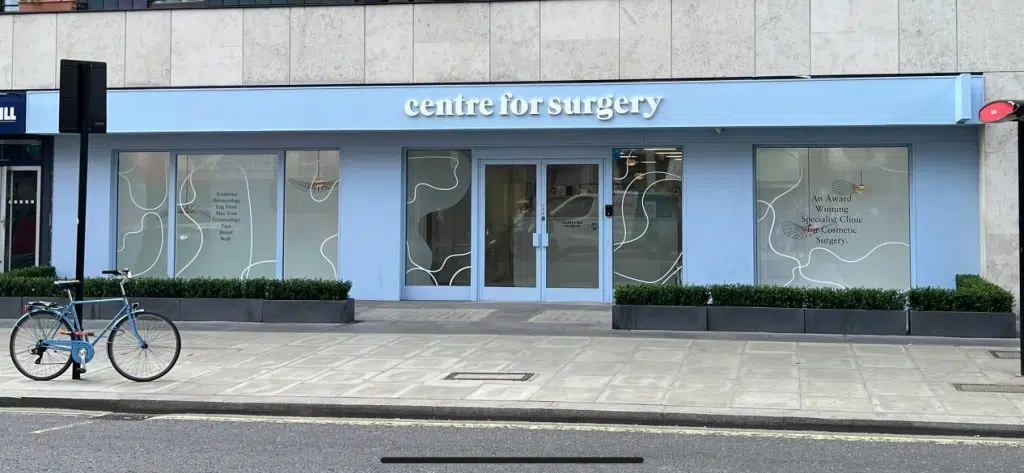
FAQs
-
What is Fotona 4D?Fotona 4D is a specialised treatment using the Fotona SP Dynamis laser system. This method involves two types of laser wavelengths that work together to tighten and rejuvenate the skin effectively. The treatment is divided into four distinct stages—SmoothLiftin, FRAC3, PIANO, and SupErficial—each targeting different depths and aspects of the skin for a comprehensive approach to skin revitalisation.
-
What can Fotona4D achieve?Benefits of Fotona 4D:
- Effective skin tightening and tissue volumisation without the need for injectable toxins or fillers
- Powerful skin lifting effect from inside out
- More youthful, healthier and firmer skin
- No downtime after procedure
- No use of needles, anaesthesia or surgery -
Can Fotona 4D Replace the Need for Microdermabrasion?Harsh abrasives are eliminated with the Fotona 4D method. The 4th step of Fotona 4D is an Erbium micro peel which can precisely remove up to 10-20 microns of the outer skin. The Erbium micro peel is a far more accurate method of gently resurfacing the skin with only 1-2 days of mild skin redness. One session of Erbium micro peel replaces a course of 6-8 microdermabrasion treatments.
You will be a suitable candidate for Fotona 4D laser if you have wrinkles, fine lines, uneven skin, lack of volume, and uneven tone and texture, which you wish to treat.
It is suitable for people who do not wish to use chemicals or harsh abrasives. Fotona 4D is the perfect complement to facial injectables, including anti-wrinkle injections and dermal fillers. In many cases, a full course of Fotona 4D may give you the desired results without any need for facial injectables. -
Where Can Fotona 4D Laser Treatments Be Applied?Primarily, Fotona 4D is used to enhance the skin on your face and neck, aiming to give you a more youthful appearance. Additionally, the Fotona laser can perform specialised treatments for specific facial areas, like around the eyes (SmoothEye) and the lips (LipLase), addressing particular concerns in these sensitive areas.
-
Is Fotona 4D a Good Alternative to Toxins and Fillers?Fotona 4D is an excellent facial rejuvenation treatment for patients who are not keen on idea of facial injectables. The treatment targets the deeper skin tissues to stimulate new collagen and can create a natural plumping effect without the need for dermal fillers. The treatment does not involve the use of any needles and is therefore ideal for patients who may have a needle phobia.
-
Am I a Suitable Candidate for Fotona 4D Laser?You will be a suitable candidate for a 4D laser facelift if you have uneven skin, want to increase volume or a wanting to treat fine lines and wrinkles.
This treatment is often appealing for those who do not wish to undergo a surgical procedure or use chemical products. -
Is the Fotona 4D Treatment Painful?Fotona 4D treatments are designed to be pain-free. During the session, you might experience a sensation of warmth or a slight pinching feeling, but it should not be painful. To ensure maximum comfort, a numbing cream can be applied before the treatment begins, making the experience as pleasant as possible.
-
How Long Does Each Treatment Session Last?Each session of Fotona 4D treatment typically lasts between 60 and 90 minutes. This duration allows for a thorough and effective treatment of the targeted areas.
-
What Will the Recovery Period be Like?This is a non-surgical procedure, so there is no recovery period. You will be able to resume your usual daily activities right away.
It is normal to experience some redness of the skin, which will last one to two days. -
When Will I Be Able to See Fotona4D Results?The results of Fotona 4D treatment develop gradually. You can expect to start seeing improvements in your skin within the first four to six weeks after your initial treatment. The results will become more pronounced with each subsequent session.
-
How Long Do the Results Last?The positive effects of Fotona 4D are long-lasting, typically remaining visible for up to a year. To maintain these results, it's recommended to have follow-up treatments on an annual basis.
-
Will I Require Multiple Treatment Sessions?For individuals over the age of 40, undergoing a minimum of three Fotona 4D sessions is advised to achieve the best results. Additionally, it's recommended to add one extra session for every decade of life, to fully cater to the needs of your skin as it ages.
-
How Much Does Fotona 4D Cost?Fotona 4D laser treatment starts from £600 for one treatment. A course of 3 treatments is recommended for optimal results.
-
When Can I Apply Makeup After the Treatment?After undergoing a Fotona 4D treatment, it's important to give your skin time to recover before applying makeup. You should wait for at least 24 hours after the treatment before using any makeup on the treated areas. This precaution helps to ensure that your skin heals properly and the results of the treatment are optimised.


